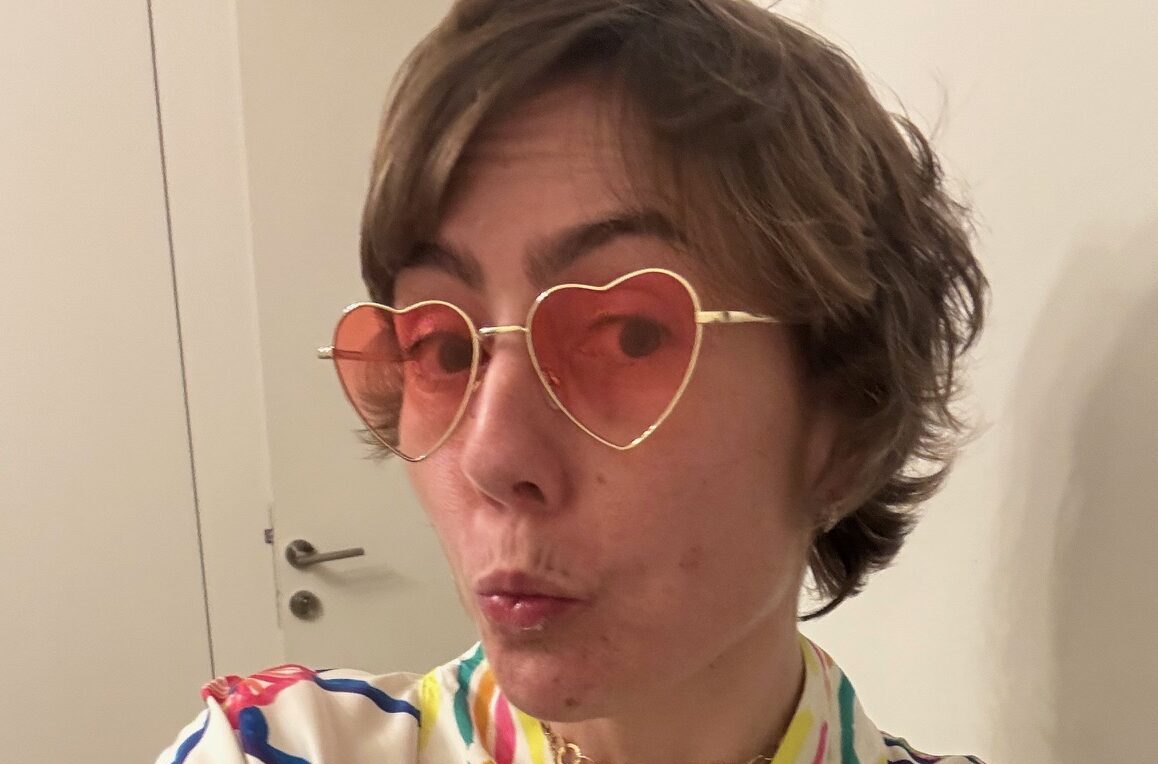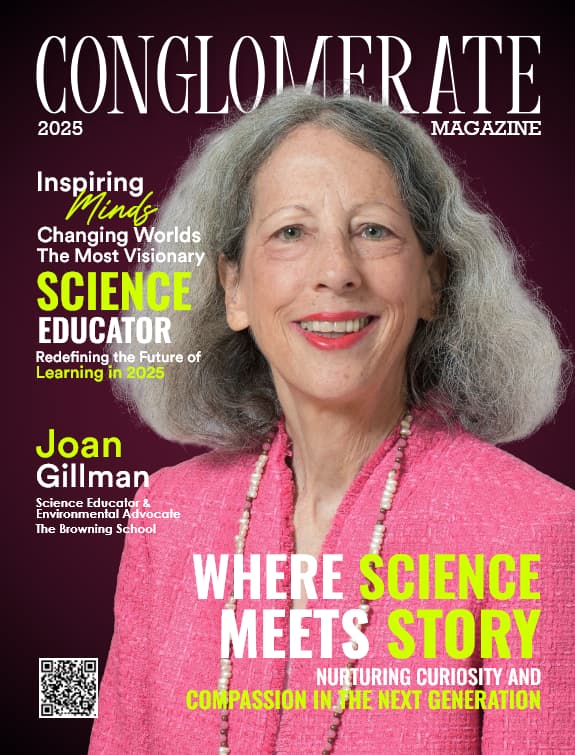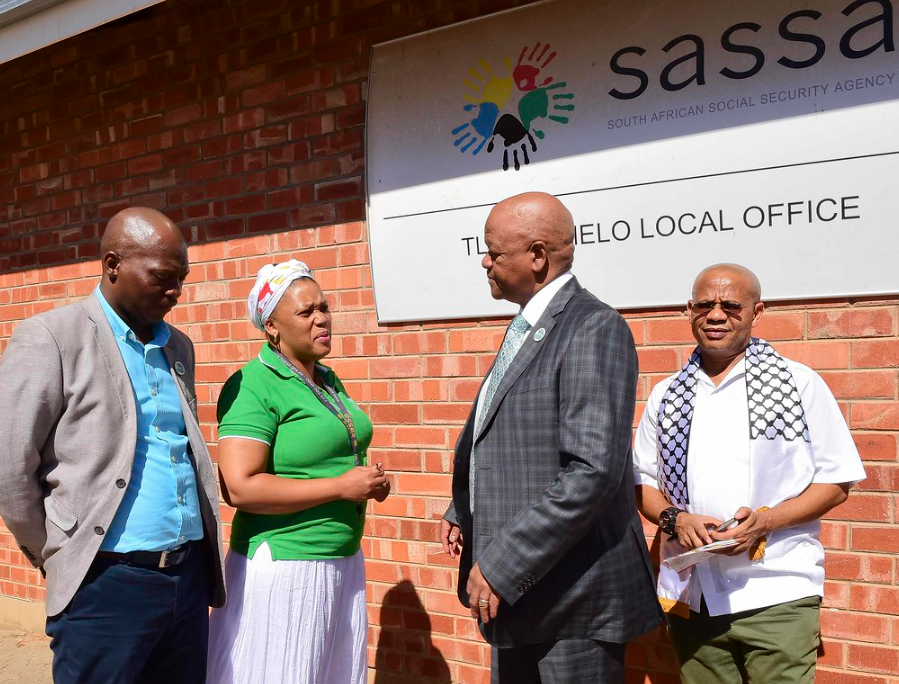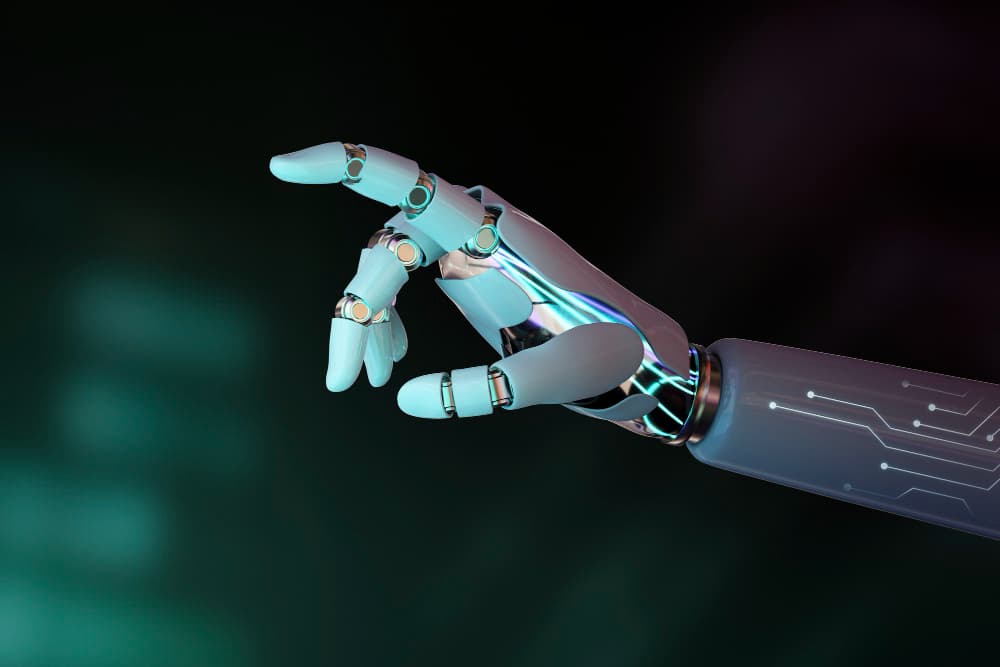When Lea Jabre describes herself, she speaks with the ease of someone who has truly become a citizen of the world. Her journey spans France, Spain, the United Kingdom, Lebanon, and The Gambia—each destination leaving an indelible mark on her identity and her mission. Yet this geographical odyssey represents far more than a collection of passport stamps. It embodies a lived understanding of how culture shapes compassion, how borders dissolve before human suffering, and how one person’s courage can resonate across continents.
“I call myself a citizen of the world, and that is a blessing,” Lea reflects on her multicultural upbringing. This perspective has given her more than just linguistic fluency in English, French, Spanish, and Arabic. It has cultivated a rare ability to navigate diverse healthcare systems, understand nuanced approaches to disease awareness, and recognize the universal human desire to be seen and supported, regardless of geography.
Growing up in Europe during a transformative period when the European Union was still finding its footing, Lea developed an early fascination with global politics and international affairs. Her Lebanese heritage added another layer to this curiosity, particularly drawing her attention to Middle Eastern geopolitics. These formative influences shaped not just her career path but her fundamental worldview: that understanding different cultures and contexts is essential to creating meaningful change.
THE MAKING OF AN ADVOCATE: FROM POLICY TO PURPOSE
Lea’s professional journey reveals an arc that many activists experience but rarely articulate so clearly. She began with intellectual ambition and idealistic purpose, studying International Public Policy at University College London, a prestigious institution that has shaped global leaders for generations. Her early career as a political consultant and journalist allowed her to apply her academic training directly to the complex terrain of international affairs and policy development.
Yet somewhere along this trajectory of professional achievement, Lea experienced what many describe as a calling. She transitioned from politics to the nonprofit sector, a move that would fundamentally alter her understanding of what it means to create impact. It was in the nonprofit world, working her way up to Director level, that she discovered the transformative power of advocacy itself.
“I became an advocate for neurodiversity and inclusion,” she explains, “and when I got diagnosed with my rare disease I kind of became an advocate without really knowing what I was doing and slowly it became a much bigger and important part of my life.”
This moment of diagnosis was not simply a medical event. It was a convergence point where her professional expertise in advocacy, her personal experience of systemic challenges, and her innate empathy crystallized into a new purpose. What had been intellectual understanding became visceral knowledge. What had been professional work became personal mission.
THE MOMENT EVERYTHING SHIFTED: STIFF PERSON SYNDROME AND AUTHENTICITY
In October 2022, Lea launched Bent Not Broken Autoimmune on Instagram and, subsequently, Living with Stiff Person Syndrome Heart to Heart on YouTube with her dear friend Dr. Ilea Khan, who also lives with Stiff Person Syndrome. She had no grand strategy, no carefully planned content calendar, no polished professional approach. Instead, she simply began sharing her reality.
“I really believe in sharing the real, the raw, the ugly, the truth and the beautiful moments,” she says. “I never think twice about what I post because I never redo a video, nothing is ever really planned.”
What Lea didn’t anticipate was how this authenticity would resonate globally. Her first video interview was filmed at an awkward angle, her face captured from below as she held the phone without professional equipment. Yet the message cut through the imperfection. People living with Stiff Person Syndrome found her. They found each other through her platform. A community that had felt isolated in their suffering suddenly had a gathering place.
Then came the moment that amplified everything. When Celine Dion publicly announced her diagnosis of Stiff Person Syndrome, the awareness that Lea had been quietly building exploded into mainstream consciousness. “It made even more sense,” Lea recalls, “and I started giving interviews and everything kind of boomed afterwards.”
What began as personal catharsis became a global movement. Today, her pages have become more than support groups. They serve as informal research networks where patients share symptoms, treatment experiences, and strategies for living with conditions that medical science itself is still struggling to understand fully. In many cases, the community becomes the greatest source of knowledge—not because doctors are inadequate, but because rare disease patients collectively hold a database of experiential wisdom that no hospital database can match.
LIVING IN THE PRESENT: SURVIVAL, GRATITUDE, AND RESILIENCE
Behind every post, every video, every message of hope lies a story of extraordinary survival. In February 2024, Lea experienced a severe septic shock. She was unconscious, fighting for her life as her body mounted a war against infection. She woke up to recover from cardiac pulmonary arrest—an experience that most do not survive, let alone walk away from mentally intact.
“I’m a miracle and I love life,” she states simply, without melodrama or self-pity. This is not denial or false positivity. It is the hard-won wisdom that comes from staring death in the face and choosing to engage with life more fully.
What makes Lea’s survival particularly remarkable is what she chose to do with it. While still in physical recovery, in May 2024, just three months after her septic shock, she took on a new role as Fundraising and Communication Manager at Reddo Care in London. This organization works in the social care sector, placing Family Support Workers with families and young people across the UK. It was an opportunity offered by one of her closest friends, someone who recognized that Lea’s recovery would be enhanced by purposeful work, not limited by pity.
“It is hard, especially with the load I carry being sick with multiple autoimmune diseases,” Lea admits when asked how she balances her advocacy and professional work. “But it is what keeps me going, call it personal drive.”
This drive is not the manufactured motivation of self-help books or motivational speakers. It is the quiet determination of someone who has learned that life offers moments of beauty and connection only to those willing to show up for them, pain or no pain.
BOUKRA NOUR: TOMORROW’S LIGHT FOR LEBANON
In December 2025, Lea stands at the threshold of another significant chapter. Together with her best friend Georges and a respected lawyer in Lebanon, she is launching Boukra Nour (meaning “Tomorrow’s Light”) in her ancestral homeland. The press conference is set for December 28th, marking the official beginning of what Lea hopes will become a transformative force for vulnerable youth across Lebanon and the broader Middle East.
The NGO represents a synthesis of everything Lea has learned and experienced. Her ten years of nonprofit sector experience. Her deep understanding of Lebanese culture and Middle Eastern context. Her lived experience of trauma, recovery, and resilience. Her belief that healing requires not just treatment but dignity, community, and hope.
Boukra Nour’s mission encompasses three pillars. First, promoting human dignity across all fields by empowering youth and supporting healing in environments that foster personal growth. Second, empowering young people to overcome social and psychological trauma through globally recognized therapeutic tools and techniques. Third, building strategic partnerships with local NGOs, ministries, and municipalities to create coordinated, community-rooted impact.
The organization will develop specialized training programs for educators, social workers, and childcare professionals in trauma-informed care and child protection. It will provide technology platforms to streamline case management for NGOs working with vulnerable populations. Crucially, it will create remote employment opportunities, offering economic stability and professional growth to young people in Lebanon and across the region.
“It is a very ambitious project, one that I definitely don’t shy away from,” Lea acknowledges, “but also very honestly and openly say we need to be many in order to carry a vision forward.”
This humility is characteristic of Lea’s approach. She doesn’t position herself as a savior. She positions herself as a connector, a translator between worlds, someone who understands both the global best practices of developed nations and the specific constraints and capabilities of developing contexts.
BRIDGING THE HEALTHCARE DIVIDE: A CONTINENTAL PERSPECTIVE
Having lived and worked across Europe, the Middle East, and Africa, Lea has observed firsthand the vast disparities in rare disease awareness and healthcare accessibility. These are not merely statistical differences in healthcare spending or pharmaceutical access, though these matter enormously. They reflect deeper realities about how different regions perceive illness, disability, and the responsibility of society to care for its most vulnerable members.
“Africa is just starting with getting a good grip on awareness but healthcare accessibility greatly varies due to economic factors,” Lea observes. “The Middle East has great healthcare but is just starting to open up to the world of awareness. The EU has a good handle on both but it depends where you are located you will still get countries where it is better than others.”
In the EU, rare disease networks have been established, patient registries maintained, and research funded through coordinated mechanisms. Yet even within Europe, she notes that access and awareness remain unevenly distributed. In the Middle East, sophisticated medical infrastructure coexists with limited public awareness about rare diseases, meaning patients often suffer in isolation despite living near world-class hospitals. In Africa, the infrastructure for even basic diagnosis remains limited, let alone the specialized care required for rare autoimmune conditions.
When asked how to bridge these gaps, Lea speaks with both ambition and realism. Media attention has played a crucial role. Her own interviews in publications worldwide have helped raise awareness globally. Celine Dion’s public disclosure about Stiff Person Syndrome accelerated this process exponentially. But media alone is insufficient.
“The media could be of big help,” Lea says, “but we also need coordinated international efforts, we need policymakers to prioritize research funding for rare diseases, and we need grassroots communities sharing experiences across borders.”
THE MISSING PIECE: RESEARCH AND FUNDING FOR RARE DISEASES
Among the challenges facing rare disease patients globally, Lea identifies awareness and advocacy as picking up momentum. The conversation is shifting. Patient communities are forming. Stories are being shared. But one critical gap remains largely unaddressed: research and funding for rare disease research itself.
“What seems however a little slower in picking up is research and funding for research for rare diseases,” she notes. “This is where NGOs and policymakers hold an important role and are the key players to make a difference.”
This is perhaps the most sobering reality of rare disease advocacy. Awareness without research can raise spirits but cannot cure conditions. A thriving patient community that understands the condition cannot develop treatments. The pharmaceutical industry, operating on market incentives, has limited motivation to invest in diseases affecting small patient populations. Governments, balancing competing priorities, struggle to justify major research expenditures for conditions affecting tiny percentages of their populations.
Yet patients themselves often become researchers, citizen scientists tracking their own symptoms and responses to treatments, collectively building knowledge bases that can inform formal clinical research. This is where organizations like Boukra Nour, and patient advocacy networks like Bent Not Broken Autoimmune, play an unexpected role. They create the infrastructure for knowledge gathering and sharing. They make the invisible visible, transforming isolated patient experiences into aggregated data that researchers can analyze.
THE POWER OF PRESENCE: COMMUNITY AS MEDICINE
When Lea was first diagnosed, the medical system could offer her diagnosis, prognosis, and treatment options. But it could not offer her community. It could not introduce her to others who woke each morning with muscles that refused to relax, who understood the specific terror of losing control of your own body, who could validate her experience without judgment.
“They are essential especially for rare diseases,” she says of online communities. “I remember when I first connected with patients who had SPS—the community has answers or at least can try and help you with all that science and doctors can’t.”
This insight revolutionizes how we think about healthcare and healing. A doctor can prescribe medication. A community can provide the context within which medication becomes meaningful. A therapist can help process trauma. A community can normalize the experience of trauma itself, removing the added burden of shame or isolation. A support group can remind patients that they are not alone, not broken, not forgotten.
Lea’s platforms have become spaces where this collective healing occurs. Where a young woman can post a video of herself struggling with muscle rigidity and receive not pity but solidarity. Where a caregiver can ask for advice about managing symptoms and receive responses drawn from lived experience. Where hope is not manufactured but harvested from the daily choices of people who refuse to let disease define their existence.
A MANUSCRIPT, A MESSAGE, AND THE FUTURE
When asked what keeps her motivated on difficult days, Lea speaks of writing. She is working on a manuscript, hoping to publish her story—not as a medical memoir but as a testament to the possibilities that emerge when pain becomes purpose, when loss becomes understanding, when isolation becomes community.
“My writing, I aim to finish a manuscript in the hope of publishing it. Of course the love of my close circle from family, spouse to friends,” she answers, acknowledging the foundation of human connection that allows her to do this work.
Her hopes for her advocacy work are similarly grounded in realistic ambition. She wants Bent Not Broken Autoimmune to reach more people globally. She wants to keep sharing relevant information that helps patients navigate their conditions. She wants her YouTube channel with Dr. Ilea Khan to continue growing as a resource for those seeking understanding about Stiff Person Syndrome. And she wants Boukra Nour to launch successfully and begin its work in 2026.
None of these goals requires her to save the world. Instead, each represents a specific, meaningful contribution to healing, awareness, and dignity. This is the wisdom of maturity—understanding that impact is measured not by global transformation but by genuine help offered to those within reach.
THE GIFT OF LIVING NOW
When asked what message she would give to patients, families, and caregivers living with rare diseases worldwide, Lea returns to the core of her philosophy: “Life doesn’t stop and neither does making beautiful memories.”
She acknowledges the pain, the fighting, the exhaustion that comes with chronic illness. But she refuses to allow disease to monopolize the narrative of her life. Instead, she proposes an alternative: “Despite the pain, the fighting, there are many positive things that have come out of my life these last few years. The biggest one has to be learning how to live in the Present and enjoying life for whatever it brings me every day.”
This is perhaps the most radical act of advocacy that Lea offers. Not primarily a policy paper or a research grant, but a lived example of someone choosing to engage fully with the moments available to her, treating each day as an opportunity for connection, beauty, and meaning.
Fighting to live has paradoxically allowed her to truly live. The characteristics she might have kept hidden beneath professional polish have surfaced through necessity and vulnerability. She has become not less but more of herself. And in that authenticity, others recognize themselves and find permission to do the same.
THE LEGACY OF COURAGE: BUILDING SYSTEMS THAT SERVE
Lea’s work across Reddo Care, Bent Not Broken Autoimmune, Living with Stiff Person Syndrome Heart to Heart, and Boukra Nour reveals a consistent vision. She believes that organizations, systems, and movements should put human beings first. Not patients as statistics, not communities as data points, but actual human beings with dignity, complexity, and intrinsic worth.
“I would ensure that organizations put their clients’ needs and requirements ahead of everything else,” she envisions when imagining systemic change. “If this happens, then it should improve society for the better.”
This philosophy transcends rare disease advocacy. It applies to how nonprofits operate, how healthcare systems are structured, how governments allocate resources, and how communities support their members. It suggests that when we genuinely prioritize the wellbeing of those we serve, many of the other challenges resolve themselves naturally.
THE PRESENT MOMENT: A CITIZEN OF THE WORLD IN ACTION
As Lea stands at the beginning of 2026, she carries within her the lived experience of multiple continents, multiple languages, multiple identities, and multiple chronic conditions. She also carries something less tangible but more valuable: a profound understanding that human connection, authentic advocacy, and purposeful work can transform not just individual lives but entire communities.
Her journey from London to Lebanon to The Gambia and back again has not been linear or predictable. Nor has her path from political consultant to rare disease advocate been planned or anticipated. Instead, it reveals how life works when we remain open to transformation, when we allow our suffering to deepen our compassion, and when we believe that our story—no matter how difficult—can become a bridge for others.
“J’aime la vie!” she concludes in French, the language of her heritage and the sentiment of her philosophy. I love life. Not despite its challenges, but encompassing them, transforming them, integrating them into a fuller, richer engagement with existence itself.
This is the legacy Lea Jabre is building. Not just organizations and awareness campaigns, though these matter. But a fundamental reframing of what it means to live fully while living with limitations, to advocate for others while honoring one’s own needs, to be a global citizen whose compassion has been forged in the crucible of personal survival.









